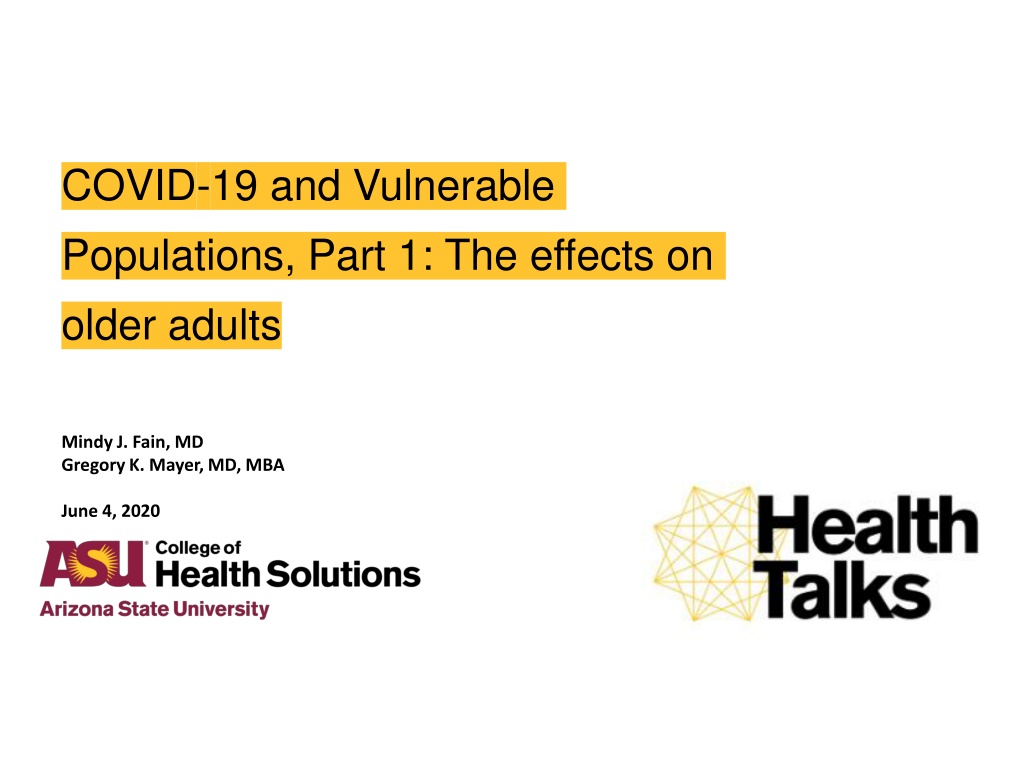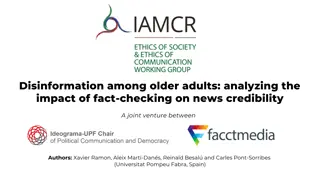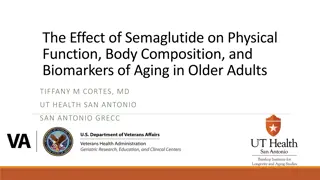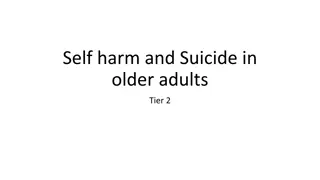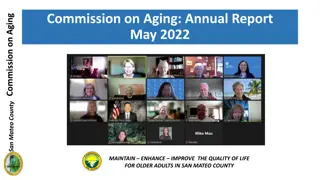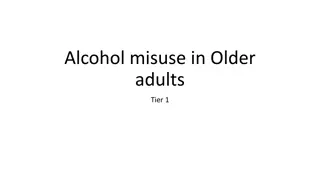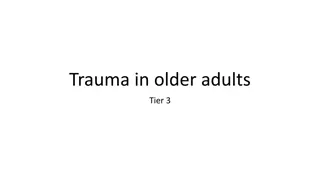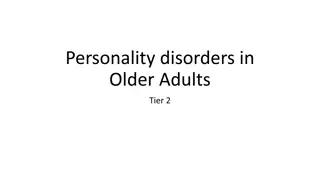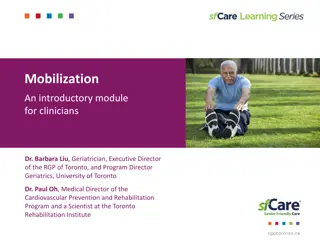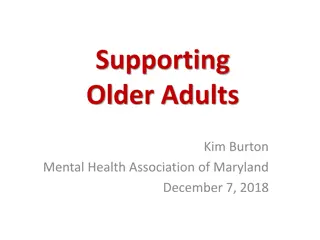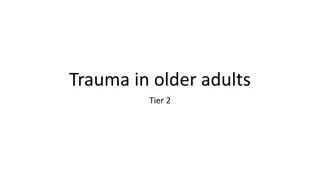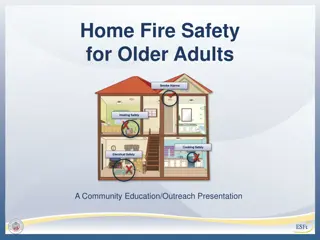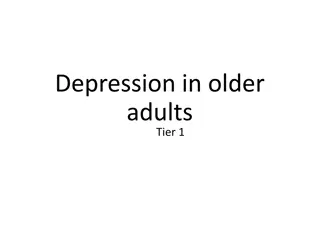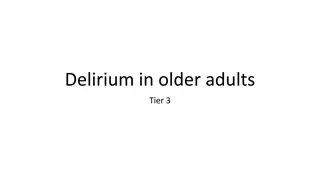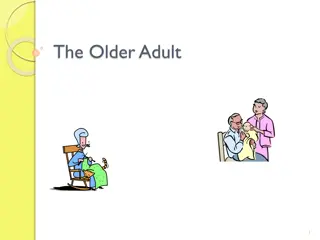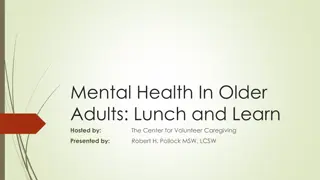Impact of COVID-19 on Older Adults: Vulnerabilities and Management
Older adults face higher risks from COVID-19, with individuals aged 65+ and 85+ suffering the most severe outcomes. Vulnerabilities in aging immune systems and unique transmission characteristics contribute to the pandemic's spread. Recognizing clinical symptoms and signs early is crucial for managing cases effectively, focusing on primary prevention and supportive care to align with patient/family goals.
Download Presentation

Please find below an Image/Link to download the presentation.
The content on the website is provided AS IS for your information and personal use only. It may not be sold, licensed, or shared on other websites without obtaining consent from the author. Download presentation by click this link. If you encounter any issues during the download, it is possible that the publisher has removed the file from their server.
E N D
Presentation Transcript
COVID-19 and Vulnerable Populations, Part 1: The effects on older adults Mindy J. Fain, MD Gregory K. Mayer, MD, MBA June 4, 2020
COVID-19 and Older Adults: An Overview ASU College of Health Solutions June 4, 2020 Mindy J. Fain, MD Co-Director, UArizona Center on Aging
Older Adults are at High Risk for COVID-19 People 65+ suffer 80% of deaths People 85+ suffer most severe outcomes Over 35% of deaths occur in nursing home patients & staff Minority groups affected disproportionately
Vulnerable Older Adult: Aging Immune System Age impacts the innate and adaptive immune systems Poor outcomes if stuck in innate Progression to adaptive and antibody production associated with better outcomes Implications for vaccine strategies
More About Older Adults & Vulnerability Aging physiology Chronic conditions Cognitive impairments Functional decline Frailty Congregate living Unique social determinants of health
How the Unique Transmission of COVID-19 Contributes to the Pandemic Spread by person-to-person and concern for indirect contact Long, silent incubation period (2-27 days), median 5-6 days >50% of asymptomatic people shed the virus Predilection for lower respiratory tract
Clinical Symptoms and Signs Older frail patients often have atypical presentations Blunted or no fever Unexplained hypoxia Tachycardia, tachypnea Delirium Fatigue, functional decline or falls Consider COVID-19 in any older adult with new-onset fever or respiratory symptoms (e.g., dry cough), or atypical complaints
Management Approaches Primary prevention is most important Halt spread from infected persons High suspicion/low threshold - diagnosis and triage to appropriate level Supportive care with close monitoring for late progression (hypoxia, respiratory distress) Care aligned with patient/family goals
Public Ageism and COVID-19 Public Discussion of Allocation of Scarce Resources w/age criteria Public Ageism: At least only old people are dying Public Guilt: responsible for widespread economic collapse Sudden Dependency: withdrawal of supports Sudden Exposure of Technological Gaps: telehealth, online activities False impression that most older adults live in nursing homes (only 4.5%)
References Nikolich-Zugich J, et. al.SARS-CoV-2 and COVID-19 in older adults. GeroScience (2020) 42:505-514 doi.org/10.1007/s11357-020-00186-0 Applegate W, Ouslander J. COVID-19 Presents High Risk to Older Persons. JAGS 68:681, 2020 doi: 10.1111/jgs.16426 Nanda A, et. al. COVID-19 In Older Adults. Aging Clinical and Experimental Research (2020) doi.org/10.1007/s40520-020-01581-5 Richardson S, et. al. Presenting Characteristics, Comorbidities and Outcomes Among 5700 Patients Hospitalized with COVID-19 in the NYC Area. JAMA (2020) doiI:10.1001/jama.2020.6775
